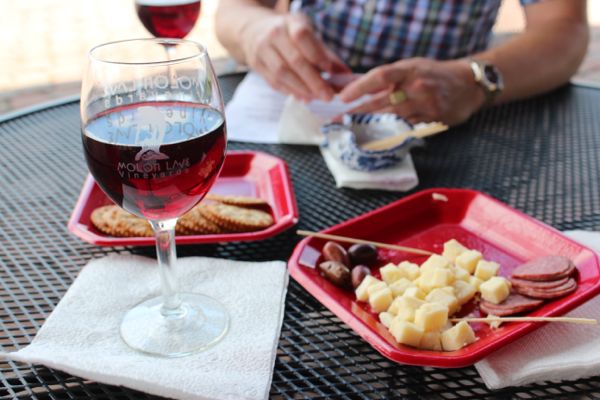We haven’t been able to participate in Wine Blogging Wednesday yet but since we both are finished with our work obligations for the summer, we decided to participate. Frank Morgan from Drink What You Like is hosting this month’s Wine Blogging Wednesday. It’s all about viggy.
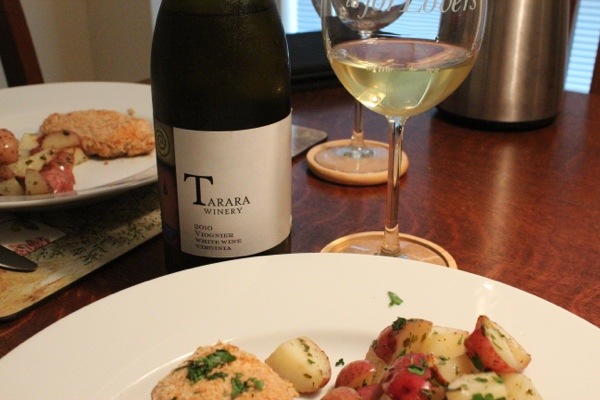
Viognier was on tap for Wine Blogging Wednesday, and we enjoyed the 2010 Viognier from Tarara Winery. This Viognier presented a more golden hue; however, we noted that the nose needed a bit of coaxing to reveal itself. Swirling (and warming) ultimately produced tropical fruit aromas with a flinty edge. Similar flavors were observed in the mouth with a nice acidity and fuller feel. We appreciated this Viognier with herb and parmesan-crusted baked chicken breasts and roasted potatoes topped with fresh parsley. I would have added a creamy sauce of some sort to complete the partnership with the 2010 Viognier from Tarara Winery; however, we had quite a feast anyway. If you haven’t had the 2010 Viognier from Tarara Winery, give it a try. And if you visit the winery, tell them Virginia Wine Time sent you!
Month: June 2012
A Mix of Wine and History at Bull Run
We were able to add another new winery to our list with a recent visit to The Winery at Bull Run. We met fellow bloggers Kurt and Carol of Wine About Virginia at the winery and enjoyed an afternoon of wine (and history).
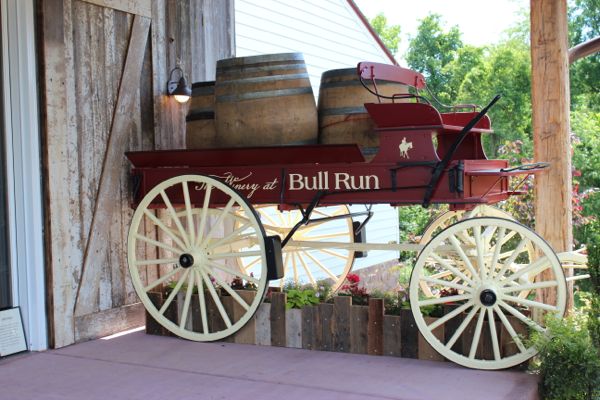
The Winery at Bull Run is located right next to the Bull Run historic park in Centreville. Kim and John Hickox own the winery, and Chris Pearmund serves as the winemaker. The winery itself is a refurbished historic home, and a display case in the center of the tasting room displays Civil War artifacts found on the property.
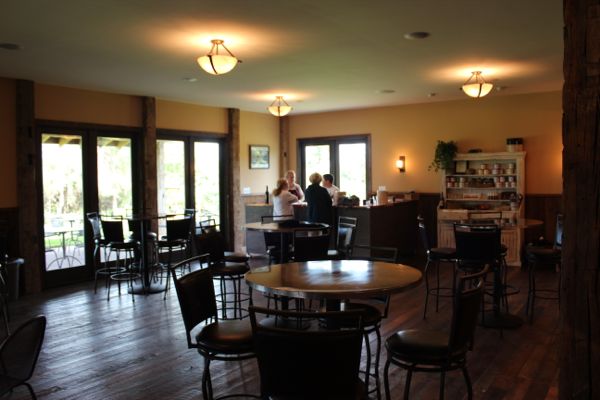
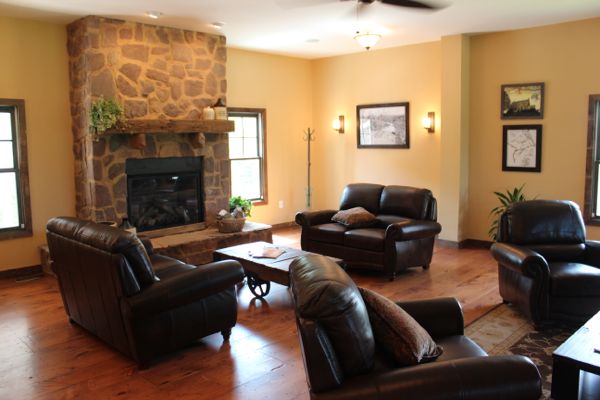
Of course, bloggers focus on the wines, and Bull Run offered nine wines for tasting. Three wines were poured and included a 2010 Chardonnay, a 2010 blend called Delaney, and a 2010 Viognier. The Delaney was described as a “quaffer” on the menu, and that was certainly an apt descriptor. A blend of Traminette, Vidal Blanc, Viognier and Reisling, the Delaney presented a floral nose and tropical fruit flavors. We tended to prefer the Viognier that was blended with Chardonnay (15%) and Gewurztraminer. It was fermented in stainless steel yet gave a heavier mouth feel with abundant peace and apricot flavors. A 2010 Rose provided a transition to the red wines; made mostly from Merlot (90%) with a splash of Chambourcin, it offered strawberry flavors and a crisp finish.
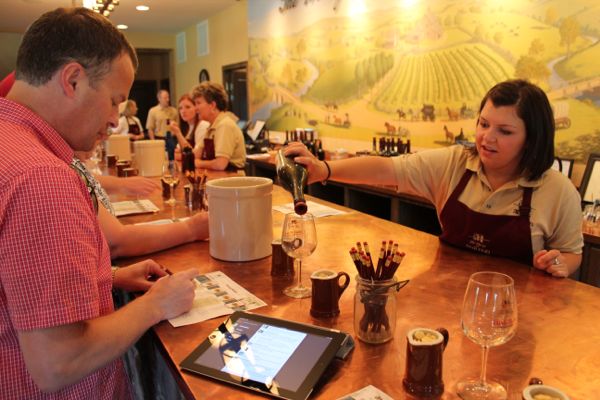
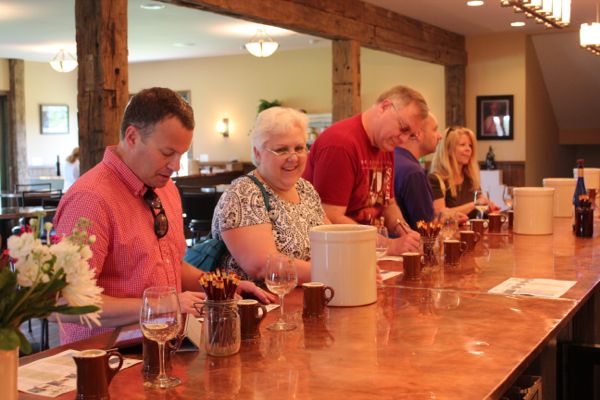
Four red wines followed and included a 2009 Cabernet Franc, 2009 Merlot, 2010 Norton, and a 2010 Meritage. The Cabernet Franc can be described as classic Virginia Cabernet Franc with its raspberry and pepper characteristics. Norton lovers should be pleased with this 2010 offering from Bull Run; a blend of 23% Cabernet Sauvignon delivers a roundness that is often lacking with Norton. In fact, The Winery at Bull Run will be planting two acres of Norton, so look for more Norton from this winery. Paul enjoyed the smoky Merlot; however, the complex 2010 Meritage should prove to be the most age worthy of the reds here. It is a blend of all Bordeaux red grapes and still evolving. The 2010 Fort is a port-style wine made from Chambourcin; smoky with cherry and cocoa nuances, this should pair well with dark chocolate or strong cheeses.
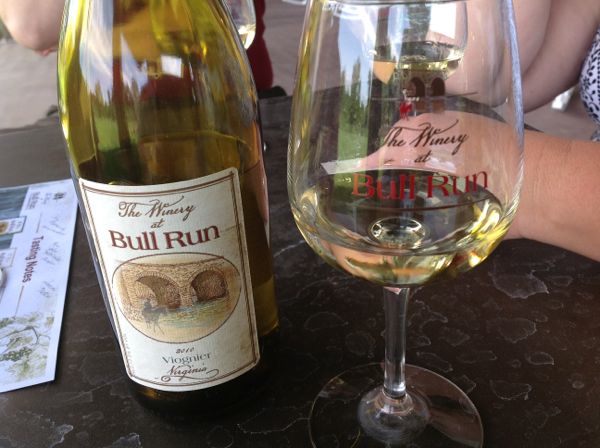
After our tasting, we all opted to share a bottle of the 2010 Viognier out on the veranda that overlooked the historic park next door. Of course, we chatted about wine but made note of our historical surroundings. We will be certain to visit The Winery at Bull Run soon; however, readers on the historical trails may want to plan for a tasting after a trip to the battle site. Be sure to mention, though, that Virginia Wine Time sent you.
Women and Wine: Annette Boyd
 The Virginia wine industry has taken off in leaps and bounds due to better winemaking—no one disputes this claim. However, another reason why Virginia wines are finally on the international radar has to do with effective marketing. In the past several years, the Virginia Wine Board Marketing Office has taken on the challenges of presenting Virginia wines to international markets including the royals of England; more recently, it planned the successful 2011 Wine Bloggers Conference held in Charlottesville. The mastermind behind these operations is Annette Boyd, director of the Virginia Wine Board Marketing Office. Annette deserves as much notice as any winemaker in Virginia for catapulting the industry to the heights that it enjoys today. Without further fanfare, meet this month’s Women and Wine feature, Annette Boyd. Click on the Women and Wine tab to read her answers.
The Virginia wine industry has taken off in leaps and bounds due to better winemaking—no one disputes this claim. However, another reason why Virginia wines are finally on the international radar has to do with effective marketing. In the past several years, the Virginia Wine Board Marketing Office has taken on the challenges of presenting Virginia wines to international markets including the royals of England; more recently, it planned the successful 2011 Wine Bloggers Conference held in Charlottesville. The mastermind behind these operations is Annette Boyd, director of the Virginia Wine Board Marketing Office. Annette deserves as much notice as any winemaker in Virginia for catapulting the industry to the heights that it enjoys today. Without further fanfare, meet this month’s Women and Wine feature, Annette Boyd. Click on the Women and Wine tab to read her answers.
It’s Kosher at Molon Lave
Our quest for summer pours brought us to Molon Lave. We first visited the winery when it first opened about two years ago, so we knew that we were due for a re-visit. Since that time, the tasting menu has expanded to include kosher wines!
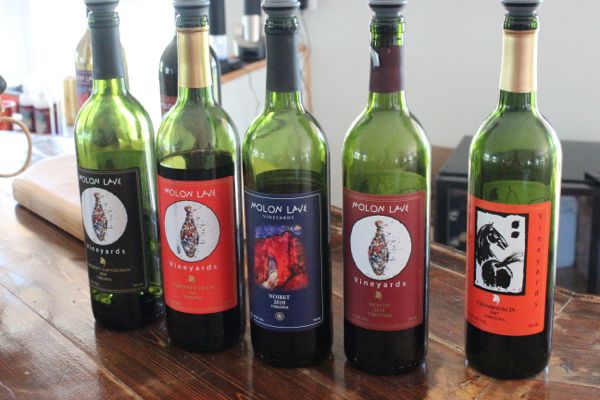
Molon Lave is Greek and roughly translate to, “Come and Get Them”, and that is what we planned to do—get the wines that is. Katherine, daughter of owner Louizos Papadopoulos, warmly greeted us and recalled our first visit to Molon Lave. She updated us on the developments at Molon Lave that include an expansion of the wine menu to include ten wines. Riesling, Vidal Blanc, Chambourcin, Merlot, Noiret, Cabernet Franc, and Cabernet Sauvignon are some of the estate-grown varieties that are now for sale at the winery. Our goal was to identify wines appropriate for the hot and humid days of Virginia summertime, and Paul’s favored the fruity 2010 Vidal Blanc with its peachy flavors. Aged in stainless steel, it should be enjoyed on its own or with a light picnic lunch, fresh fruit, and light cheeses. Katie’s Charm should delight rose lovers who appreciate the Chambourcin grape. Bright strawberry notes and a characteristic tart finish make for the perfect wine to bring to a Wolftrap concert. Outdoor grilling might call for a red wine, and the 2010 Cabernet Franc was my own personal favorite. This spicy red wine was aged for 12 months in American oak barrels and presented flavors of blackberry and raspberry. Sweet wine lovers might enjoy the Autumn Nectar, a blend of late harvest Rielsing, Pinot Gris and Viognier. At 2.5 residual sugar, it should be fine with dessert; however, our friend Michael Tyler would probably sip this one on its own.
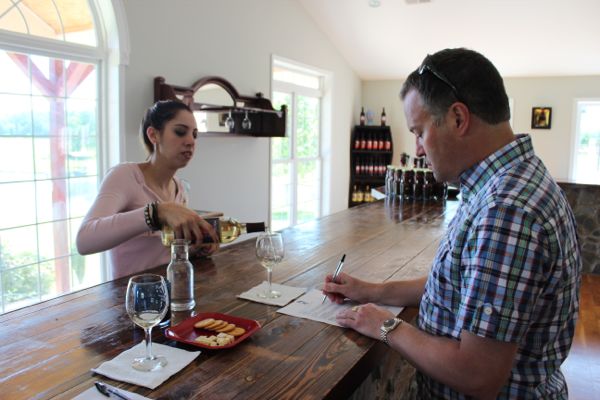
We were very intrigued with the kosher wines, and winemaker and owner Louizos Papdopoulos was on hand to answer our questions about this process. Louizos became interested in producing kosher wines due to his business dealings both here and in New York City; he discovered that Jewish communities were interested in local wines, but they had no local options for kosher wines. Louizos decided to fill this void and pursued the process of making kosher wines. Kosher wines are made according to strict Jewish dietary laws, and only a rabbi can make the wines. These laws and practices go back to ancient bibilical times. At Molon Lave, a rabbi now makes three kosher wines, and these include the 2010 Riesling, the upcoming 2010 Chardonnay, and the smoky 2010 Noiret, a hybrid red grape. The wines have become popular sellers, and Molon Lave was the first Virginia winery and among very few east coast wineries to produce kosher wines.
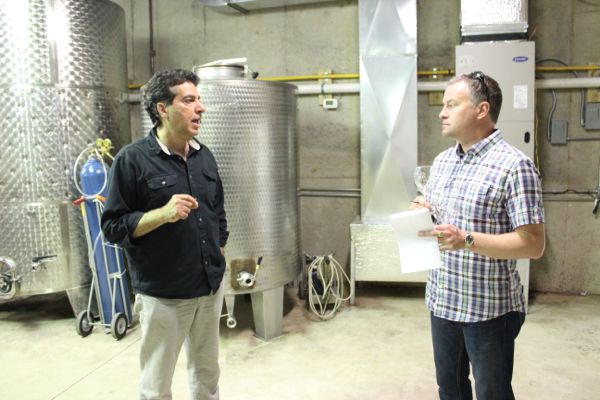
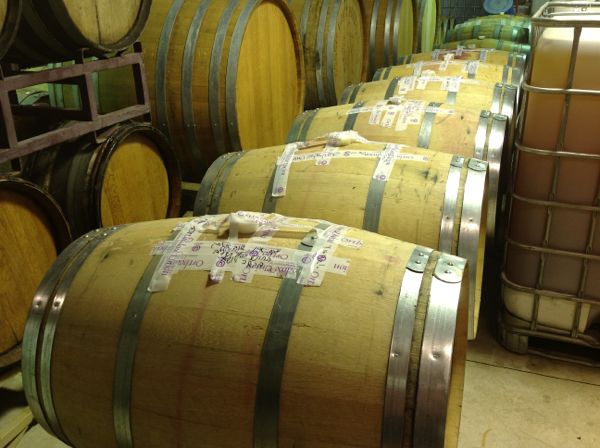
Louizos filled us in on future goals for Molon Lave, and these include a continuation of the kosher wines. He also intends to plant an additional 20 acres of vines to include more of the varietals now grown on the estate with Traminette being added to the mix. The overall winemaking philosophy will remain the same, though, and that is to produce fruit-forward, drinkable wines.
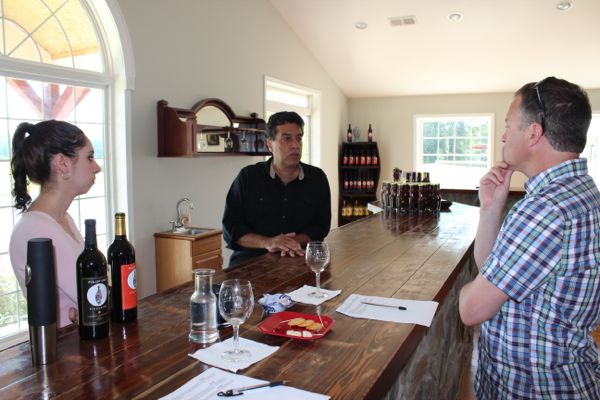
With our tasting done, we decided to enjoy a glass of Katie’s Charm with a plate of salami, cheeses, and Greek olives. We walked up to the pavilion and enjoyed a panoramic view of the lovely grounds at Molon Lave. We made certain to leave with bottles of summer favorites, and we plan to visit sooner to keep abreast of developments at Molon Lave. Be sure to visit Molon Lave for a tasting, but be sure to mention that Virginia Wine Time sent you.
